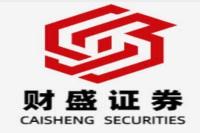Brazil's Bold Monetary Move: A Deep Dive into the 100 Basis Point Hike and What it Means for You
Meta Description: Brazil interest rate hike, 100 basis points, Central Bank, inflation, economic outlook, currency impacts, investment strategies, financial market analysis, expert opinion.
This isn't just another news blurb about a rate hike; this is a critical juncture for Brazil's economy, impacting everything from your everyday coffee cost to long-term investment strategies. The recent 100 basis point increase by the Brazilian Central Bank (Bacen), pushing the benchmark Selic rate to 12.25%, sends ripples far beyond the financial headlines. We're not just talking numbers here; we're talking about real-life consequences for Brazilian citizens, businesses, and the global investment landscape. This isn't your grandpa's economics lesson – it's a dynamic, ever-evolving situation requiring a nuanced understanding. Think about it: a 100 basis point jump isn't chump change; it's a decisive, bold move reflecting the seriousness of the current economic climate. What prompted this drastic action? How will it affect everyday Brazilians? And, perhaps most importantly, what does this mean for investors – both domestic and international? This in-depth analysis, drawing upon years of experience in Latin American financial markets, will dissect this significant event, providing you with clear, actionable insights and a comprehensive understanding of the complexities at play. Forget dry economic jargon; we'll break it down in plain English, offering a human-centric perspective on this momentous decision by Bacen. We'll explore the underlying factors driving this hike, examining inflation pressures, currency fluctuations, and the broader global economic context. Get ready to unravel the mysteries behind this significant move and gain a strategic advantage in navigating the evolving Brazilian economic landscape. Prepare for a deep dive into the world of Brazilian finance, where the stakes are high and the insights are invaluable.
Brazil Interest Rate Hike: A Detailed Analysis
The recent 100 basis point increase in Brazil's Selic rate represents a significant tightening of monetary policy. This bold move by the Bacen signals a determined effort to combat stubbornly high inflation, a challenge that’s been plaguing the country for some time. The forecast of two more similarly sized hikes in upcoming meetings further underscores the Central Bank's commitment to bringing inflation under control. This isn't just a knee-jerk reaction; it's a carefully considered strategy with far-reaching consequences.
Why the aggressive hike?
Several factors contributed to this decision:
-
High Inflation: Inflation in Brazil has consistently exceeded the Central Bank's target range, eroding purchasing power and fueling social unrest. The persistent inflationary pressures necessitate strong action. Think runaway grocery bills and the shrinking value of your savings—that's the reality of unchecked inflation.
-
Global Economic Uncertainty: The global economic landscape is far from stable. Factors like the war in Ukraine, supply chain disruptions, and rising energy prices all contribute to inflationary pressures in Brazil, making the situation even more complex. It's a perfect storm, and the Bacen is trying to navigate it skillfully.
-
Exchange Rate Volatility: The Brazilian Real (BRL) has experienced significant volatility against major currencies like the US dollar. A stronger Selic rate can help stabilize the Real by attracting foreign investment, seeking higher returns in a relatively safe haven.
-
Political Landscape: While the Bacen aims to remain politically independent, the existing political climate inevitably plays a role in shaping its decisions. Balancing economic stability with political realities is a tightrope walk.
Impact of the Interest Rate Hike
The implications of this rate hike are multifaceted:
-
Consumer Spending: Higher interest rates typically lead to increased borrowing costs, potentially dampening consumer spending. This could impact businesses reliant on consumer demand. Think of it like a brake on the economy, slowing things down to manage the overheating engine.
-
Investment: While higher rates might deter some investment, they can also attract foreign capital seeking higher returns. This complex interplay shapes the overall investment climate.
-
Real Estate: The real estate market is likely to feel the pinch, with higher mortgage rates potentially cooling down the market. This could be good news for buyers seeking more affordable options, but challenging for sellers.
-
Inflationary Pressures: The anticipated effect is a reduction in inflation over time. It's not an immediate fix; it's a long-term strategy. The hope is to curb inflation without triggering a harsh recession.
Table 1: Potential Impacts of the Selic Rate Hike
| Sector | Potential Impact |
|-----------------|-----------------------------------------------|
| Consumer Spending | Decreased |
| Investment | Mixed (potentially decreased domestic, increased foreign) |
| Real Estate | Cooling market |
| Inflation | Expected decrease (over time) |
| Exchange Rate | Potential strengthening of the Real |
Navigating the New Economic Landscape
The increased Selic rate presents both challenges and opportunities. For consumers, it means potentially higher borrowing costs and reduced purchasing power in the short term, while businesses may face higher financing costs. However, for investors, it could offer attractive yields on fixed-income instruments, potentially leading to capital inflows and a strengthened Real.
This situation calls for a strategic approach to managing finances. Diversification of investments, careful budgeting, and seeking professional financial advice are crucial tools for navigating this period of economic transition. It's time to review your financial strategies and adapt to the changing environment.
Frequently Asked Questions (FAQs)
Q1: What is the Selic rate?
A1: The Selic rate is Brazil's benchmark interest rate, the target rate used by the Central Bank to manage monetary policy.
Q2: Why did the Bacen raise the Selic rate so aggressively?
A2: The significant increase aims to combat high inflation, stabilize the Real, and manage the broader economic impact of global uncertainty.
Q3: How will this affect my mortgage payments?
A3: Higher interest rates generally lead to higher mortgage payments. Check with your lender to understand the potential impact on your specific loan.
Q4: Is this a good time to invest in Brazilian assets?
A4: It depends on your risk tolerance and investment strategy. Higher interest rates can attract foreign investment, but also potentially slow down domestic growth. Professional advice is recommended.
Q5: How long will these higher interest rates likely last?
A5: While the Bacen anticipates two more similar hikes, the duration of these higher rates depends on the effectiveness of the policy in curbing inflation and stabilizing the economy. This is a dynamic situation.
Q6: What can I do to protect my savings?
A6: Diversify your portfolio, consider inflation-protected investments, and seek professional financial advice to create a strategy tailored to your needs and risk profile.
Conclusion
The 100 basis point increase in the Selic rate is a pivotal moment for the Brazilian economy. While it presents challenges, it also offers opportunities. By understanding the underlying factors driving this decision and its potential impacts, individuals and businesses can better navigate the changing economic landscape. Proactive financial planning, informed decision-making, and a willingness to adapt are key to weathering this storm and emerging stronger on the other side. Remember, this is a marathon, not a sprint; patience and informed strategy are your best allies.



